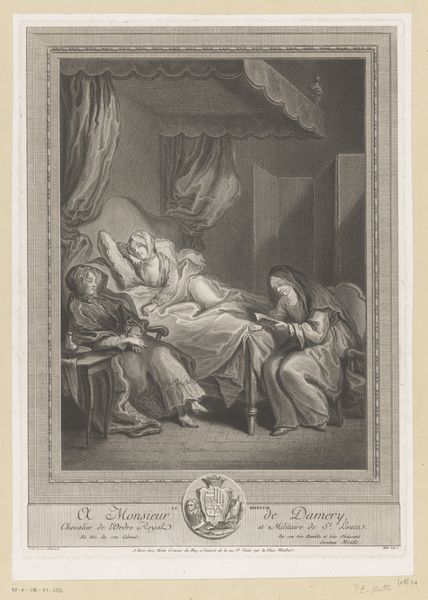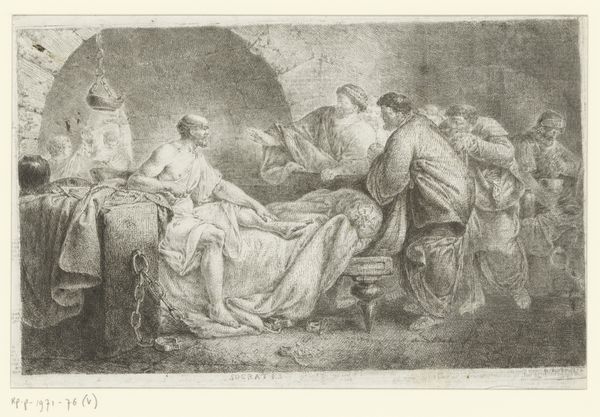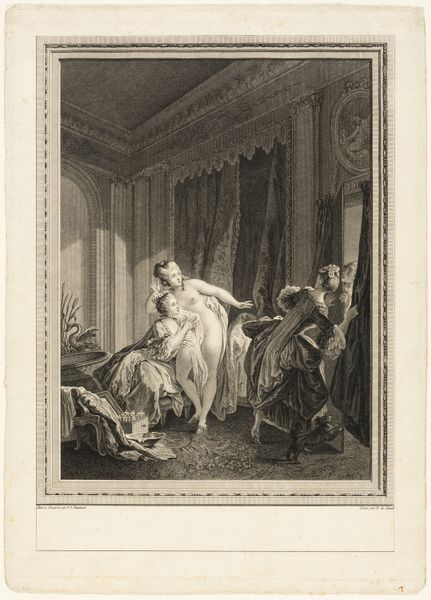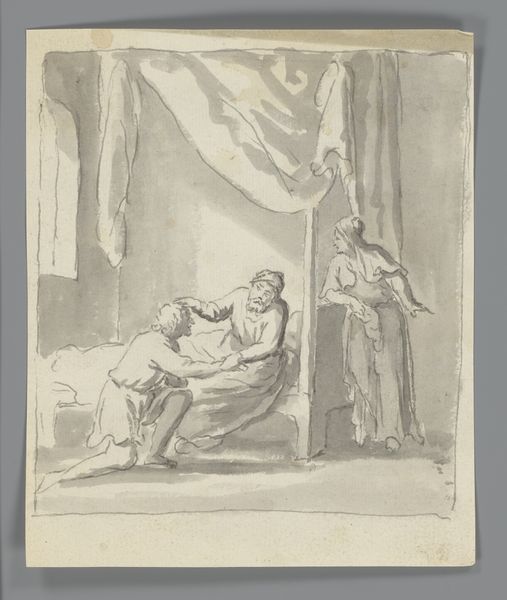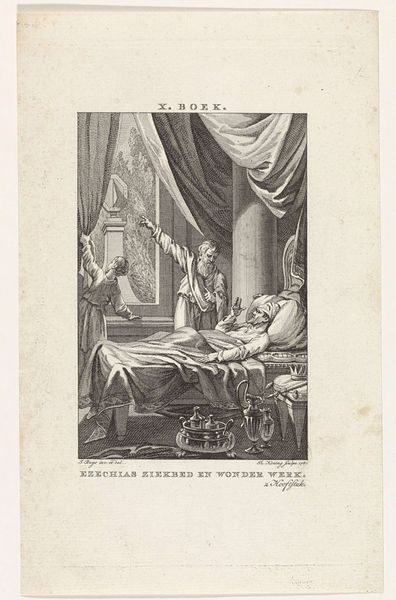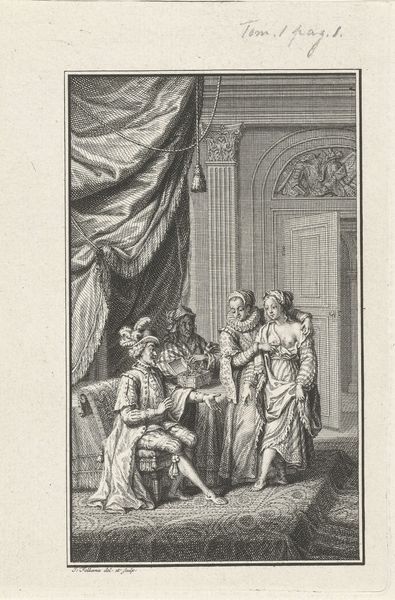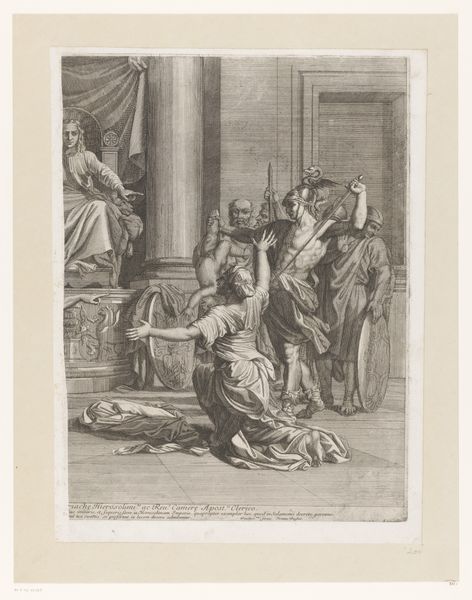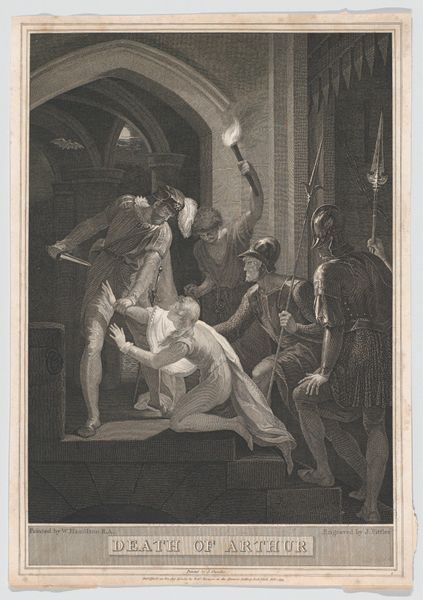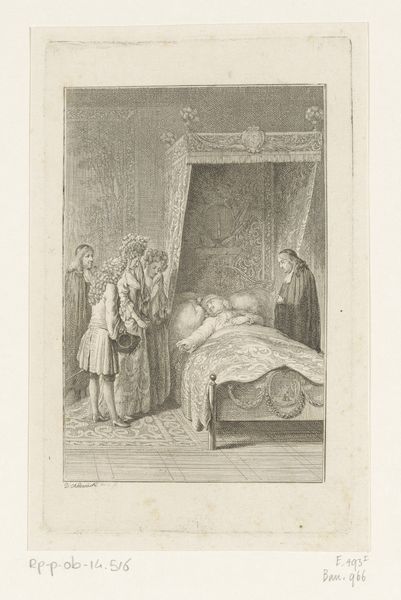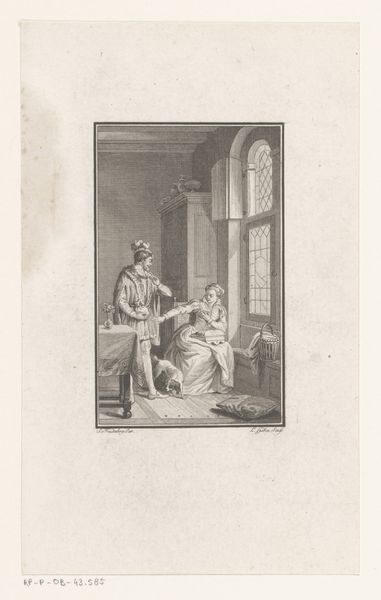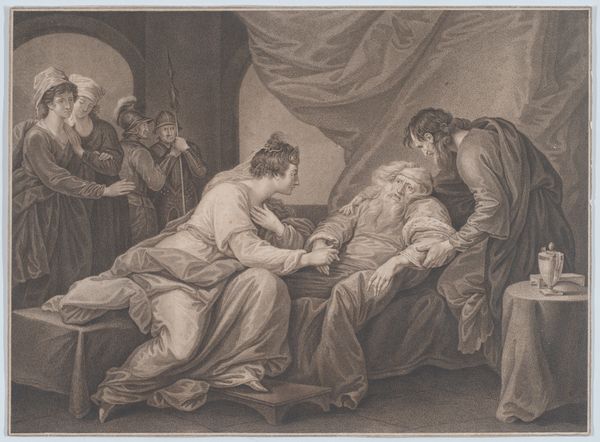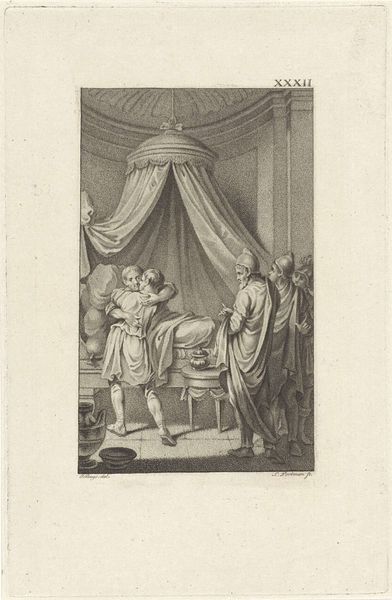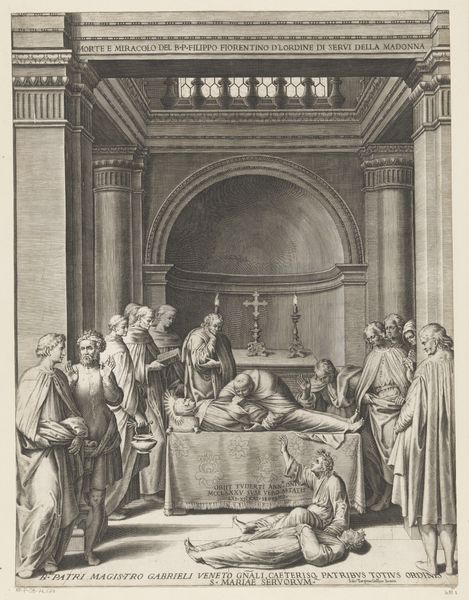
drawing, print, sculpture, engraving
#
portrait
#
drawing
#
neoclacissism
# print
#
figuration
#
sculpture
#
men
#
line
#
history-painting
#
academic-art
#
engraving
#
male-nude
Dimensions: Sheet: 30 1/8 × 22 5/8 in. (76.5 × 57.4 cm)
Copyright: Public Domain
Curator: My word, isn't this engraving utterly captivating? "Tu Marcellus Eris," created by Charles Simon Pradier in 1832, it’s just steeped in classical drama. The neoclassical style fairly leaps off the page, wouldn't you say? Editor: It's certainly…stark. Almost oppressive, even with the clear, academic lines. It gives off this powerful feeling of impending doom, and this really reflects what it represents. Marcellus' death and Augustus' grief is palpable here. Is that what the title alludes to? Virgil's prophesy about Marcellus' doomed fate? Curator: Precisely. Virgil’s line, "Thou shalt be Marcellus," from the Aeneid. The engraving, housed here at the Metropolitan Museum of Art, perfectly captures the moment. I find it almost heartbreaking. Do you notice the dramatic light? Editor: The chiaroscuro is strong. I also love how the setting really emphasizes imperial power: we're in a grand interior with strong vertical lines that focus the scene; everything feels solid and impenetrable. A naked, warrior statue standing guard with a drawn sword adds to the ambiance. Curator: Oh, yes, the warrior sculpture looms over everything. But look at the faces—the artist’s skillful hand at depicting the despair, especially the women and the elders witnessing such a tragic demise. There's something undeniably beautiful about the scene, even in its sorrow. Pradier, you know, was excellent. I really love that line. Editor: Right. In light of Pradier and the context of its creation, perhaps what strikes me the most is how historical narratives get solidified into what feels like inescapable truths—in part, precisely because of beautifully-wrought artworks such as these. There's power in memorialization; and responsibility, too. Curator: I couldn't agree more. It leaves you contemplating the nature of fate, doesn't it? And mortality! It seems to float between capturing beauty and truth. That combination is quite evocative. Editor: It truly does, and by emphasizing this specific telling, other versions fade, while sociopolitical norms consolidate. It definitely invites thoughtful contemplation about more than just a single death. Thanks for shedding some light on this powerful and somewhat foreboding image.
Comments
No comments
Be the first to comment and join the conversation on the ultimate creative platform.
